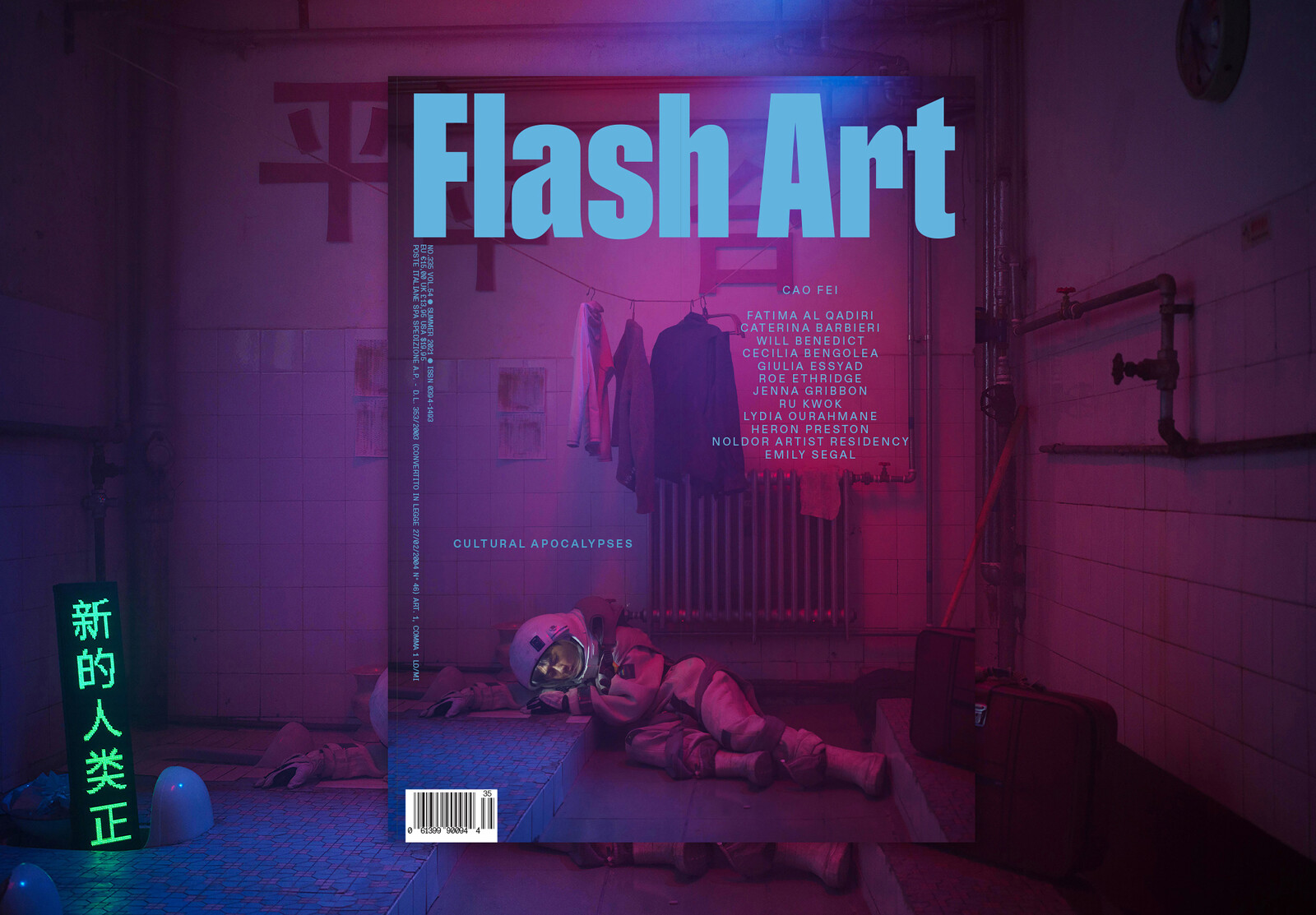June 8, 2021
In this issue, writer and philosopher Federico Campagna, in a surprisingly conversation with Andrea Bellini about the end of the world, explains that a world is a “‘likely story’ about reality” and that “after a while, each cosmological narration exhausts its narrative cycle and it comes to an end: its future runs out and an apocalypse befalls it.” According to Campagna, each of us go through several “ends of the world.” As we continue to witness a host of more-or-less subjective historical apocalypses, and as our tenure on this planet approaches an existential end due to any number of potentially irreversible processes already under way, could it be useful to take stock of our current “cultural apocalypse”? Are we merely going through the usual aesthetic clashes and mediumistic innovations, or is a more categorical transition afoot?
Part of the difficulty of teasing out such a distinction is that all cultural evolution is intimately intertwined with the other forces that shape (and inevitably lead to the collapse of) a given cosmos. Political, social, economic, and cultural factors all drive the end of a world, as we have come to understand from studying pre-Columbian civilizations, the ancient Egyptians, or even more recent paradigm shifts in Central and Eastern Europe. One of the fallacies of Western culture is that art can be pursued in a rarified realm divorced from the struggles of everyday reality. Still, as Campagna argues in his new book, Prophetic Culture, we are just as responsible for our cultural legacy as we are for global warming and economic and social injustices. As custodians of the former, we can try to foster positive change across all of these fronts as we navigate the ever-rising waters.
Spanning from these reflections we titled the issue “Cultural Apocalypses” dedicating our cover story to Cao Fei, one of the most farsighted artists on the international scene which discusses here her explorations of worlds both real and virtual with Daniel Birnbaum, Hou Hanru, Hans Ulrich Obrist, and Philip Tinari. And in attempt to fight against these fallacies above we invited artists and thinkers who embrace our path: the multidisciplinary artist Cecilia Bengolea talks with Flash Art editor Eleonora Milani about her development as a dancer and choreographer and her vision for a hybridized body in a perpetual state of change; Chus Martínez considers Ingo Niermann and Alexa Karolinski’s film Oceano de amor while communing with feathered colleagues; Carlos Kong explores Lydia Ourahmane’s intimate dislocations; Andrea Lissoni interviews Fatima Al Qadiri about the making of her new album Medieval Femme. Besides special commissions such as a visual essay conceived by Giulia Essyad based on a sci-fi saga about a utopian civilization and a visual project made by Jenna Gribbon.
Also in this issue: Charlie Robin Jones reflects on designer Heron Preston and the unending work of the NYC Department of Sanitation; William J. Simmons unpacks irony and shame in relation to the unflinching gaze of Roe Ethridge; and John Belknap contemplates the leveraging of failure through the lens of Emily Segal’s novel Mercury Retrograde.
Reviews: Grief and Grievance: Art and Mourning in America New Museum, New York / Niki de Saint Phalle: Structures for Life MoMA PS1, New York / Yayoi Kusama: A Bouquet of Love I Saw in the Universe Gropius Bau, Berlin / Alain Jacquet” Jeux de Jacquet Galerie Perrotin, Paris / Age of You Jameel Arts Centre, Dubai / Regina Cassolo Bracchi: REGINA. DELLA SCULTURA GAMeC, Bergamo / Hannah Villiger: Works / Sculptural Istituto Svizzero, Rome
Get your print copy here or subscribe for digital access here.


